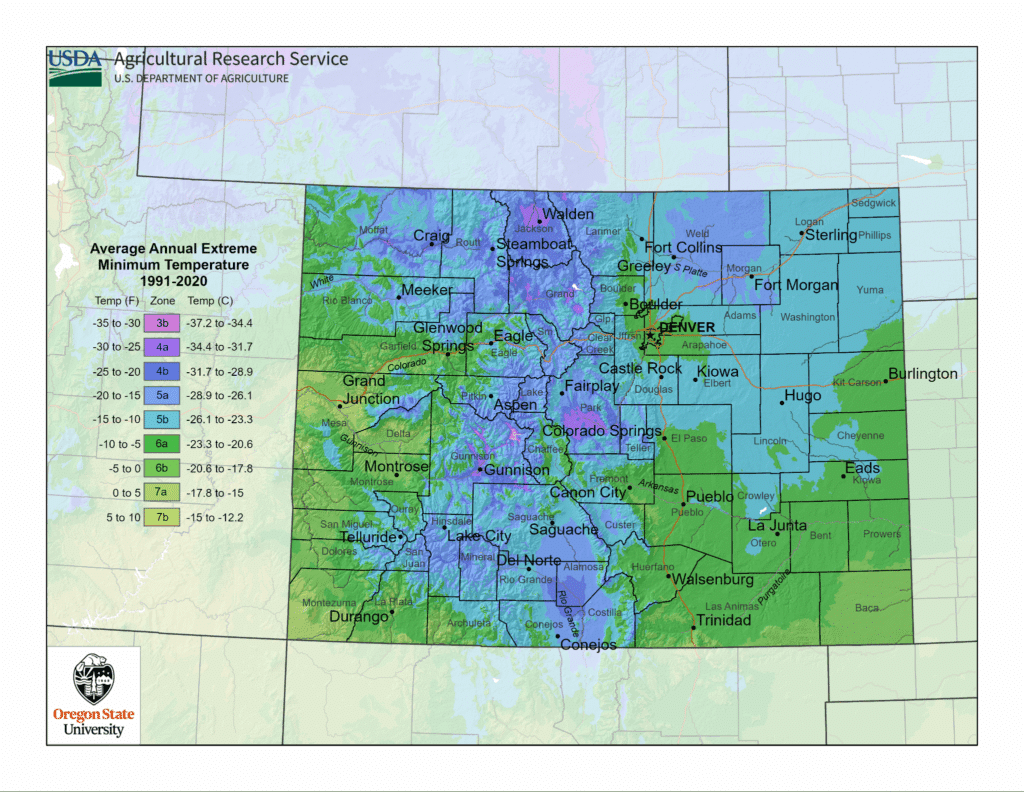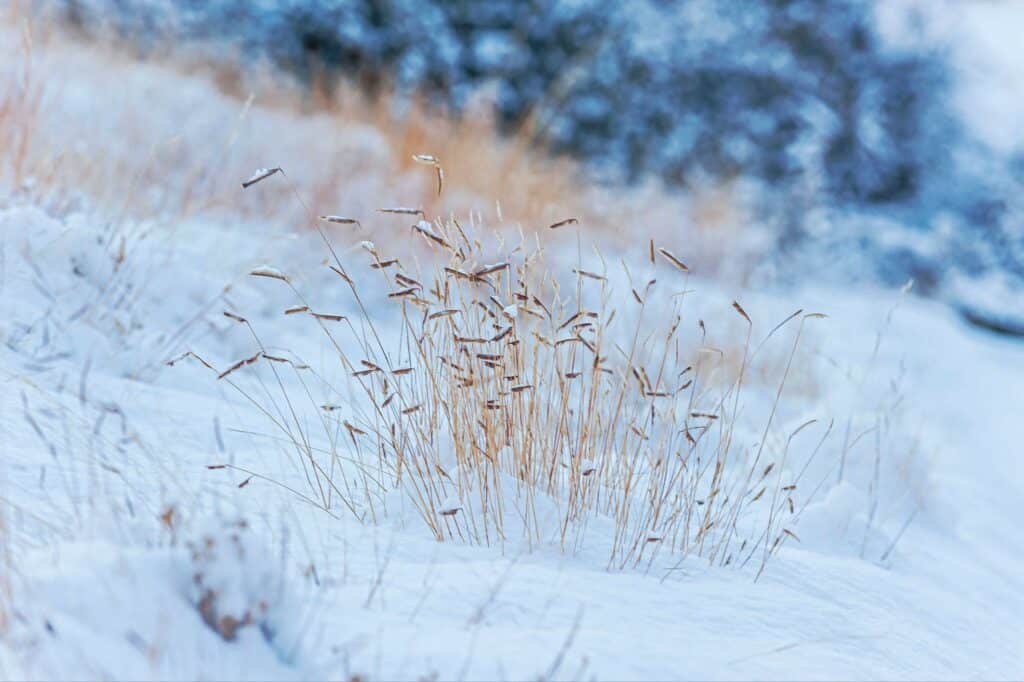Know Your Hardiness Zone
Contact UsJune 24, 2025
Hardiness zones are used to tell which plants can survive your region’s coldest temperatures. Because of its large discrepancies in altitude and latitude, Colorado doesn’t stick to just one zone—it ranges from Zone 3 to Zone 7 depending on elevation and location. If you want your landscape to grow strong and stay healthy, you need to pick plants that match your zone. It’s a simple step that makes a big difference.
What Is a Hardiness Zone?

Hardiness zones are a guide to help you figure out which plants can survive your local winter temps. The USDA Hardiness Zone Map breaks the U.S. into 13 zones, each based on the average annual minimum winter temperature. Lower numbers mean colder climates. For example, Zone 3 is colder than Zone 6.
Each zone also has an “a” and “b” subzone. These represent 5-degree differences. So, Zone 5a averages lows of -20 to -15°F, while 5b runs -15 to -10°F. That may sound small, but for plants, those few degrees can make or break survival. Knowing your exact zone helps you choose plants that won’t just survive, but actually thrive. It’s one of the smartest starting points in landscape planning.
Colorado’s Hardiness Zones
Colorado’s landscape covers a big range when it comes to hardiness zones—anything from Zone 3 in the high mountains to Zone 7 in warmer, low-lying spots. Elevation plays a huge role here. The higher you go, the colder it gets, which drops your zone number. But don’t forget about urban heat islands. Cities like Denver or Fort Collins tend to stay warmer, bumping up their zones a bit compared to nearby rural areas.
Microclimates also add twists—south-facing slopes, valleys, or areas near water can all shift your local zone by a notch or two. For example, most of Northern Colorado, including Fort Collins, lands around Zones 5a to 6b. (You can download a copy of Colorado’s hardiness map here.)
What This Means for Landscaping
Knowing your hardiness zone is like having a survival guide for your plants. That’s why matching turfgrass, perennials, trees, and shrubs to your zone is key. Blue spruce handles our cold snaps like a champ. Potentilla offers vibrant blooms without demanding a ton of water. Blue grama grass? Perfect for tough lawns that don’t want to quit. When your plants fit the zone, they grow stronger, bloom longer, and need less babysitting. Skip the guessing game—stick to what your landscape actually needs.

Beyond the Zone: Other Factors
Hardiness zones give a general idea of what plants can handle the cold, but there’s more to successful landscaping than just temperature. Soil quality, for one, plays a huge role—some soils drain well, while others hold too much water or lack nutrients. Sun exposure varies across your yard, as such, it also affects which plants will thrive. Wind can dry out plants quickly, drainage issues can cause root rot or stress plants during heavy rains, and water availability and efficient irrigation make or break plant health, especially in dry climates.
All these factors interact in complex ways. That’s why professional landscape design matters. Experts don’t just pick plants that survive your zone; they craft a plan refined to your unique environment. They optimize plant placement, soil preparation, and watering systems for long-term success. Sustainable landscaping reduces waste, cuts water use, and keeps your yard healthy year-round.
Create a Hardier Landscape With Lindgren
To create a thriving, sustainable landscape in Colorado’s unique environment, you need more than basic knowledge—you need a plan built for your specific conditions. Lindgren Landscape has the experience and local insight to design and maintain a yard that looks great and stands up to the elements. Ready to turn your outdoor space into something that lasts? Contact Lindgren Landscape today!